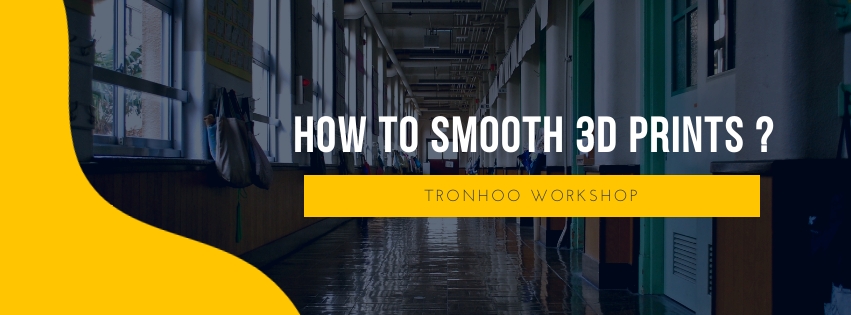People might feel that when we have a 3D printer, we are omnipotent. We could print whatever we want in an easy way. However, there are various reasons that might affect the texture of the prints. So how to smooth the most commonly used FDM 3D printing material -- the PLA prints? In this article, we’ll be offering some tips regarding unsmooth outcome that arise due to technical reasons of the 3D printers.
Wavy Pattern
The wavy pattern condition appears because of the 3D printer vibrations or wobbling. You will notice this pattern when the extruder of the printer makes a sudden direction change, such as near a sharp corner. Or if the 3D printer had loose parts, it could also cause vibration. Also, if the speed is too high for your printer to handle, vibration or wobbling arises.
Make sure you fasten up the bolts and belts of the 3D printer and replace those that are worn out. Place the printer on a firm table-top or place and check if the bearings and other moving parts of the printer are functioning smoothly without any jerks. And you need to lubricate these parts if so. Once you have solved this issue, it should stop the imperfection of uneven and wavy lines in your prints that cause walls not to be smooth.
Improper Extrusion Rate
One of the most important factors that determine precision and the quality of a print is the extrusion rate. Over extrusion and under extrusion could result in unsmooth texture.
The over extrusion situation happens when the printer extrudes more PLA material than needed. Each layer seems obviously on the surface of a print, showing an irregular shape. We suggest to adjust the extrusion rate via printing software and also pay attention to the extrusion temperature.
This under extrusion situation happens when the extrusion rate lower than required. Insufficient PLA filaments during printing will result in imperfect surfaces and gaps between layers. We suggest a proper filaments diameter by using a 3D printer software to adjust the extrusion multiplier.
Filaments Overheating
The temperature and cooling rate for the PLA filaments are two important factors. Balance between these two factors will provide prints with a good finish. Without proper cooling, it will increase time for setting.
Ways to avoid overheating are to lower the cooling temperature, increase the cooling rate, or reduce the printing speed to give it time to adjust. Keep regulating these parameters until you find the perfect conditions for a smooth finish.
Blobs and Zits
While printing, if you are trying to join two ends of a plastic structure together it is found hard to do it without leaving any trace. When the extrusion begins and stops, it creates irregular spillage at the junction. These called blobs and zits. This situation ruins the perfect surface of the print. We suggest adjusting the retract or slide settings in the 3D printer software. If the retraction settings are incorrect, too much plastic may be removed from the printing chamber.
Post time: Aug-27-2021

